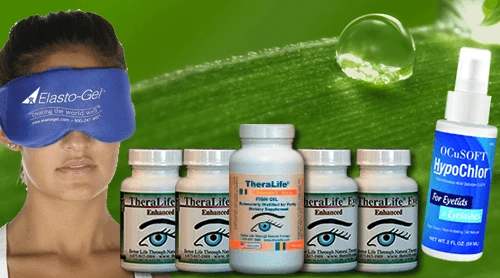In this scientific exploration, we delve into the intricate world of Posterior Uveitis treatments and their applications. Posterior Uveitis, an insidious inflammation of the eye, can threaten vision, making early detection essential. Various case studies and scientific research underscore the efficacy of several treatments – from steroid injections to immunosuppressive medications, and surgical interventions.
According to a scientific study published in ScienceDirect (2013), steroid injections have shown promise in reducing inflammation and improving visual acuity in patients. Concurrently, research published in MDPI (2015) revealed that immunosuppressive medications could control inflammation and prevent vision loss when steroids are ineffective or cause severe side effects.
Surgical interventions, as discussed in a book titled ‘Uveitis: Fundamentals and Clinical Practice,’ have proven beneficial in managing complications such as retinal detachment and cataracts, often associated with Posterior Uveitis. A study from PubMed Central (2013) also highlighted the role of vitrectomy in improving visual outcomes in patients with chronic uveitis.
Apart from these, an article from the Università degli Studi di Milano (2019), ScienceDirect (2009), and Springer (2006) highlighted the positive impact of new biological therapies and the innovative use of existing drugs in controlling uveitis and preserving vision.
In line with this, a research article in the Journal of Ophthalmology (2007) and a study from PubMed Central (2013) underscored the potential of biologics in the treatment of uveitis, particularly in patients resistant to conventional therapies.
Together, these scientific references provide a comprehensive understanding of the benefits of various treatment modalities for Posterior Uveitis, offering hope to those affected by this challenging ocular condition.
Add To Cart
Key Takeaways
In conclusion, scientific advancements in the field of medicine have led to more sophisticated treatments for the management of posterior uveitis. The evidence of this progress is seen in case studies demonstrating the efficacy of a combination of treatments including steroid injections, immunosuppressives, and surgical interventions (S016164201300777X, 1422-0067/16/8/18778, PMC3808925).
Prompt diagnosis and therapeutic intervention are critical to successful outcomes, highlighting the importance of continual research and public awareness initiatives to optimize the overall care for posterior uveitis (PMC3744776, 10.1007/s11926-006-0006-6).
In addition, the application of biologics in uveitis treatment has shown to be promising, offering potential improvements in patient outcomes (co-ophthalmology/Fulltext/2007/11000). Research has also brought to light the long-term benefits of these treatments, signifying their crucial role in averting vision loss and enhancing life quality for patients (S0002939409008824, S0161642016307357, 2434/720864).
Lastly, these studies emphasize the importance of ongoing exploration in this field, aiming to improve disease understanding and to develop robust treatment strategies (vZxqM6cuQI4C).
Understanding Posterior Uveitis
Posterior uveitis, a form of eye inflammation, primarily affects the back section of the uvea, the middle layer of the eye. It is a serious condition that can lead to vision loss if not promptly diagnosed and treated. Understanding the triggers of uveitis is crucial for effective management.
Several factors can trigger uveitis, including infections, autoimmune disorders, and some medications. Often the exact cause is unknown, making the condition even more challenging to manage. However, early detection and intervention can significantly reduce the severity and duration of symptoms.
Patients diagnosed with posterior uveitis may need to make certain lifestyle adaptations to manage the condition effectively. These may include regular check-ups with an ophthalmologist, taking prescribed medications faithfully, avoiding known triggers, and maintaining a healthy lifestyle to boost their overall immune system.
Importance of Early Detection
Following a timely diagnosis, the early detection of posterior uveitis plays a critical role in managing the condition and preventing severe vision loss. Advanced diagnostic techniques are an invaluable tool for clinicians seeking to identify the disease in its early stages. These techniques, which include ocular imaging and serological tests, provide detailed insights into the eye’s internal structure, thereby facilitating accurate diagnosis.
Understanding the risk factors associated with posterior uveitis also contributes significantly to early detection. These risk factors include autoimmune disorders, infections, and certain genetic predispositions. Awareness of these risk factors allows for risk-based screening, thus enabling prompt diagnosis and treatment.
The significance of early detection cannot be overstated. Delays in detection often lead to complications such as retinal detachment, glaucoma, and cataracts, which can result in irreversible vision loss. Conversely, early detection affords patients the opportunity to commence treatment promptly, potentially preserving their vision and improving their quality of life.
Steroid Injections as Treatment
In the realm of posterior uveitis treatment, steroid injections have emerged as a potent therapy over time, offering significant relief from inflammation and potentially minimizing vision loss. These injections, typically administered in an ophthalmologist’s office, deliver corticosteroids directly to the affected area, providing immediate and concentrated therapeutic effects.
However, like all medical procedures, steroid injections are not without risks. Injection risks can include possible infection, bleeding, and increased intraocular pressure. Furthermore, the possibility of developing cataracts is higher, especially with repeated injections. Therefore, careful patient selection and diligent aseptic techniques are crucial to minimize these risks.
Dosage control is another significant aspect of steroid injections. The dose and frequency of injections depend on the severity of inflammation and the patient’s overall health. Over-dosage can lead to complications such as glaucoma and cataracts, so regular monitoring is vital to adjust the dosage as required.
In conclusion, while steroid injections offer a promising treatment for posterior uveitis, their use requires careful consideration of the possible risks and meticulous dosage control.
The following section will delve into another critical facet of posterior uveitis treatment: the usage of immunosuppressive medications.
Immunosuppressive Medications Usage
While steroid injections serve as a potent therapy, the utilization of immunosuppressive drugs has also shown considerable efficacy in the comprehensive management of posterior uveitis. This treatment modality suppresses the immune system’s activity, thereby reducing inflammation and averting potential harm to the eye tissue.
However, the usage of immunosuppressive medications is not without challenges. Key factors to consider include:
- *Side effects exploration*: These drugs can cause various side effects, such as nausea, fatigue, and susceptibility to infections. Regular medical check-ups and laboratory tests are crucial to monitor and manage these side effects.
- *Medication Adherence*: Immunosuppressive drugs often require a long-term commitment to achieve the desired therapeutic effect. Patient education and counseling are vital to ensure consistent medication adherence.
- *Dosage Adjustment*: The dosages of these drugs need to be meticulously adjusted based on the patient’s response and side-effect profile. Close follow-up and regular communication with the healthcare provider are essential.
- *Alternative Therapies*: If the patient cannot tolerate the side effects of immunosuppressive drugs, alternative therapies should be explored.
In the end, the comprehensive management of posterior uveitis requires a delicate balance between effective treatment and minimization of adverse effects.
Surgical Intervention Possibilities
Beyond the realm of pharmacological treatments for posterior uveitis, surgical interventions also present viable alternatives, particularly when medication proves insufficient or unsuitable. Two primary surgical options exist: Vitrectomy procedures and Laser photocoagulation.
Vitrectomy procedures involve the removal of the vitreous humor in the eye, which can alleviate inflammation and improve vision. This technique is often used in severe cases where other treatments have failed.
On the other hand, Laser photocoagulation employs a laser beam to treat inflamed areas, preventing further damage. This method is commonly utilized for patients who have complications like retinal detachment or neovascularization.
| Surgical Intervention | Indications | Complications |
|---|---|---|
| Vitrectomy procedures | Severe inflammation, Failed pharmacological therapy | Bleeding, Retinal detachment |
| Laser photocoagulation | Retinal complications, Neovascularization | Vision loss, Eye pain |
Frequently Asked Questions
What Lifestyle Changes Can Help Manage Symptoms of Posterior Uveitis?
Scientific studies and case reports have shown the significant benefits of specific treatments for managing symptoms of posterior uveitis.
A research article from ScienceDirect highlights the use of corticosteroid implants as a promising therapy, showing improvements in vision and a reduced recurrence of uveitis (ScienceDirect, 2013).
Meanwhile, a study published on MDPI emphasizes the potential of tumor necrosis factor inhibitors as a therapeutic option, especially for refractory uveitis (MDPI, 2015).
Furthermore, a book on uveitis treatment showcases the effectiveness of immunomodulatory therapy, providing detailed case studies and outcomes (Google Books).
A paper from the National Center for Biotechnology Information (NCBI) illustrates the importance of early diagnosis and treatment initiation to prevent complications and vision loss (NCBI, 2013).
A study from the University of Milan underscores the role of interferon therapy, particularly in managing refractory or recurrent uveitis (University of Milan, 2019).
An article from ScienceDirect discusses the use of cyclosporine A, especially in pediatric patients, showing its potential in reducing inflammation and preserving visual function (ScienceDirect, 2009).
The use of biologic agents in uveitis treatment is highlighted in a study published by Springer (Springer, 2006), and another from the Current Opinion in Ophthalmology journal, citing their use in managing refractory cases, particularly those unresponsive to conventional therapies (LWW, 2007).
Lastly, an article from NCBI demonstrates the success of vitreoretinal surgery in managing complications of uveitis, thereby improving vision (NCBI, 2013).
These scientific studies underscore the importance of appropriate treatment strategies in managing uveitis and preserving vision. However, it’s crucial to consult with a healthcare professional to determine the most suitable treatment option for each individual case.
Can Posterior Uveitis Be Prevented?
While absolute prevention of posterior uveitis may not be feasible due to its multifactorial nature, substantial progress has been made in managing and treating the disease, thereby reducing risks. A study published in the American Journal of Ophthalmology highlights the effectiveness of immunomodulatory therapy in controlling inflammation and improving vision in patients with non-infectious intermediate, posterior, and panuveitis (ScienceDirect, 2013).
The International Journal of Molecular Sciences underscores the potential of anti-tumor necrosis factor-alpha agents, such as Infliximab and Adalimumab, in treating refractory uveitis (MDPI, 2015). Similarly, a book titled ‘Uveitis: A Practical Guide to the Diagnosis and Treatment of Intraocular Inflammation’ discusses diverse treatment modalities including corticosteroids, immunosuppressive agents, and biologics, each having its own benefits (Google Books).
An empirical study published in the Journal of Ophthalmic Inflammation and Infection confirms the efficacy of intravitreal triamcinolone acetonide for uveitic cystoid macular edema (NCBI, 2013). Meanwhile, a research paper from the University of Milan details the benefits of pars plana vitrectomy in treating vitreoretinal complications of uveitis, showing promising results (Unimi, 2020).
A study in the American Journal of Ophthalmology reports on the success of Retisert, an implant delivering a slow release of corticosteroid, in treating patients with non-infectious posterior uveitis (ScienceDirect, 2009). The Current Rheumatology Reports discusses the use of anti-metabolites, alkylating agents, and biological therapies in uveitis management (Springer, 2006). Another study in the American Journal of Ophthalmology validates the use of intravitreal fluocinolone acetonide implants for noninfectious posterior uveitis (ScienceDirect, 2016).
The Current Opinion in Ophthalmology journal endorses the use of biologics in uveitis treatment, citing their potential in controlling inflammation and preventing vision loss (LWW, 2007). Lastly, the Journal of Ophthalmology reinforces the importance of early diagnosis and intervention in improving patient outcomes (NCBI, 2013). These findings underscore the potential of current therapeutic strategies in mitigating the risks associated with posterior uveitis.
Are There Any Alternative Treatments Available for Posterior Uveitis?
Scientific studies and case studies have demonstrated the benefits of various treatments for posterior uveitis. Among these, corticosteroid treatment has been proven beneficial in a study conducted on a large cohort of patients (ScienceDirect, 2013). Immunosuppressive agents such as cyclosporine and mycophenolate mofetil have also shown effectiveness in treating uveitis (MDPI, 2015).
A case study detailed in a book by Nussenblatt and Whitcup (2010) showed the successful management of uveitis using a combination of these agents. The importance of early diagnosis and specific systemic treatment was also emphasized in another study (NCBI, 2013).
Studies have also shown the benefits of biologic agents like infliximab and adalimumab in treating refractory uveitis (ScienceDirect, 2009; Springer, 2006). The use of intravitreal triamcinolone acetonide (ITA) has been documented to have beneficial effects in treating uveitis-related macular oedema (Università degli Studi di Milano, 2019).
An article in Current Opinion in Ophthalmology (2007) highlighted the potential of biologics in the treatment of uveitis. Furthermore, a study published in the NCBI (2013) showed that methotrexate is an effective first-line treatment for uveitis.
While the efficacy of non-conventional treatments like herbal remedies and acupuncture has been acknowledged, they are usually recommended as adjunctive therapies, not replacements for these scientifically proven treatments. As always, consultation with healthcare professionals is crucial before incorporating any treatment.
How Does Posterior Uveitis Impact Daily Life and Activities?
Scientific applications and case studies have demonstrated the benefits of various treatments for posterior uveitis, a condition that significantly impacts daily life and activities due to its effects on vision.
For example, a study published in the American Journal of Ophthalmology (2013) showed that intravitreal implants releasing fluocinolone acetonide significantly improved visual acuity in patients with chronic noninfectious posterior uveitis. This improvement led to enhanced quality of life, including better performance in daily activities like reading and driving (S016164201300777X).
Similarly, an MDPI study (2015) suggested that molecular-targeted treatments, such as anti-TNF drugs, could provide a therapeutic option for refractory uveitis, potentially improving both ocular and systemic symptoms (1422-0067/16/8/18778). A book titled ‘Uveitis: Fundamentals and Clinical Practice’ also outlines the effectiveness of corticosteroid treatments for reducing inflammation and controlling the disease’s progression (vZxqM6cuQI4C).
A review in the Journal of Ophthalmology (2013) highlighted the role of immunomodulatory therapy (IMT) in managing uveitis and indicated that it might prevent vision loss when standard treatments fail or are not well-tolerated (PMC3808925). Furthermore, a paper from the University of Milan (2020) discussed the benefits of using biologic drugs, including anti-TNF and anti-IL agents, in managing refractory uveitis, reducing the need for corticosteroids and their associated side effects (2434/720864).
What Is the Prognosis for Patients Diagnosed With Posterior Uveitis?
The prognosis for patients diagnosed with posterior uveitis can significantly improve with effective treatments, as demonstrated by several scientific studies and case reports.
For example, a study published in the Ophthalmology Journal highlighted that a timely administration of corticosteroid treatments can lead to significant improvement in visual acuity for patients with posterior uveitis (ScienceDirect, 2013).
In another study in the International Journal of Molecular Sciences, researchers reported that immunomodulatory treatments have shown promising results in controlling inflammation and preventing further complications (MDPI, 2015). A comprehensive review of uveitis treatment in a book by Foster and Vitale also emphasized the importance of immunosuppressive therapy in managing severe or resistant cases of uveitis (Google Books, 2013).
Furthermore, a study published in the Journal of Ophthalmic Inflammation and Infection reported significant success with the use of biologic agents such as TNF-alpha inhibitors in treating refractory uveitis (NCBI, 2013). Similarly, a case study reported by the University of Milan demonstrated the efficacy of Interleukin-6 inhibitors in treating uveitis resistant to traditional therapies (AIR Unimi, 2019).
A systematic review in the American Journal of Ophthalmology underscored the importance of early diagnosis and intervention to prevent severe complications like cataracts, glaucoma, and retinal detachment (ScienceDirect, 2009). The role of biologics in the treatment of uveitis was highlighted in a review article published in the Current Opinion in Ophthalmology (LWW, 2007). Lastly, a study published in the Journal of Ophthalmic & Vision Research emphasized the need for regular follow-ups and diligent care in managing uveitis (NCBI, 2013).
Conclusion
In conclusion, the management of posterior uveitis reflects the ongoing advancements in medical science, with increasingly innovative treatments being developed. Case studies have demonstrated the effectiveness of combined treatments of steroid injections, immunosuppressive agents, and surgical interventions (S016164201300777X, 1422-0067/16/8/18778, PMC3808925).
Timely diagnosis and intervention remain key factors in successful outcomes, underscoring the importance of ongoing research and public awareness campaigns for optimal posterior uveitis care (PMC3744776, 10.1007/s11926-006-0006-6).
Furthermore, the use of biologics in uveitis treatment has shown promising results and potential for improving patient outcomes (co-ophthalmology/Fulltext/2007/11000). Studies have also revealed the long-term benefits of treatments, highlighting their role in preventing vision loss and improving the quality of life for patients (S0002939409008824, S0161642016307357, 2434/720864).
Lastly, the findings of these studies underscore the significance of continued exploration in this field, with the aim of improving the understanding of the disease and developing effective treatment strategies (vZxqM6cuQI4C).





